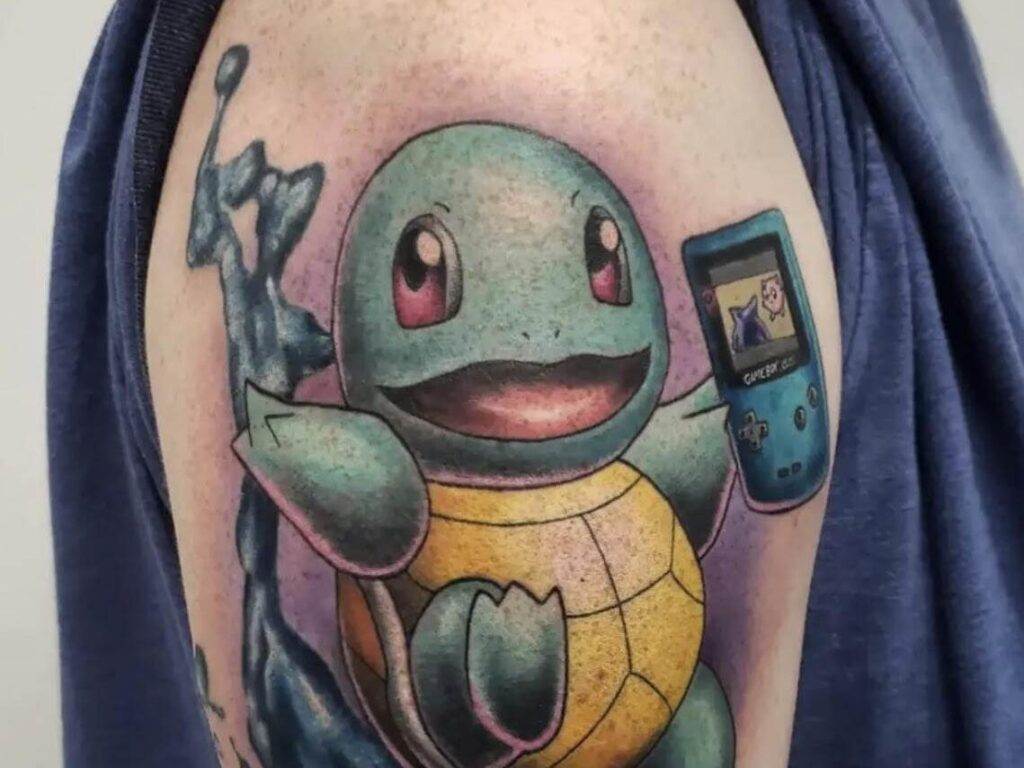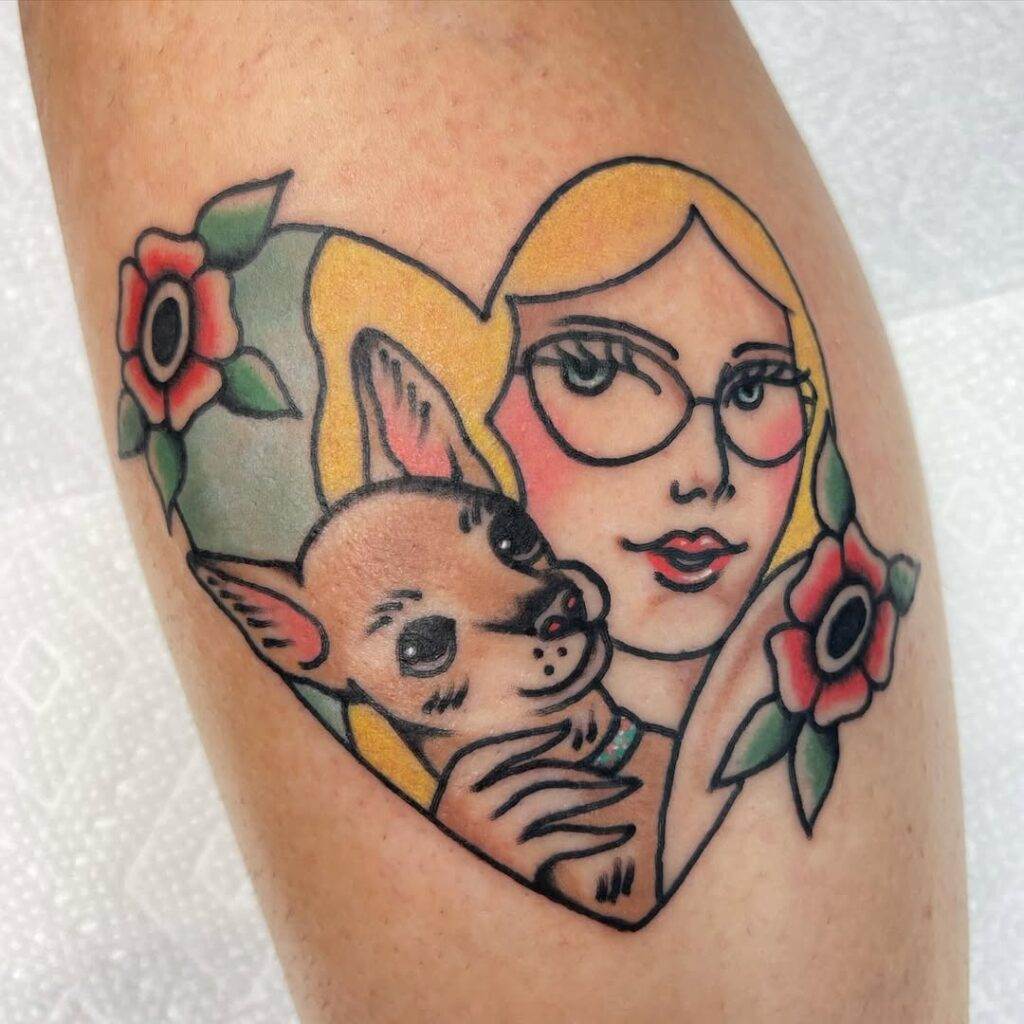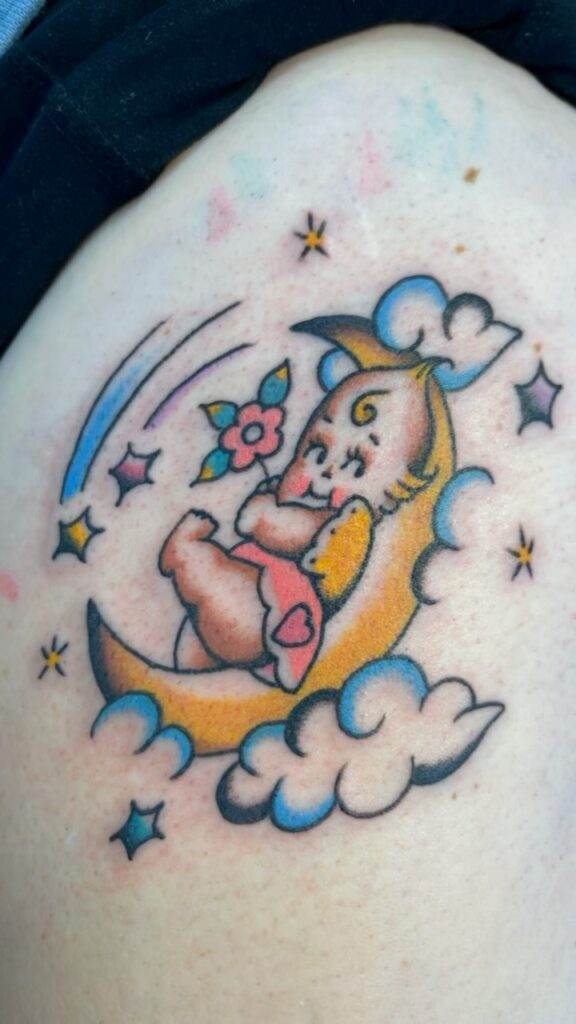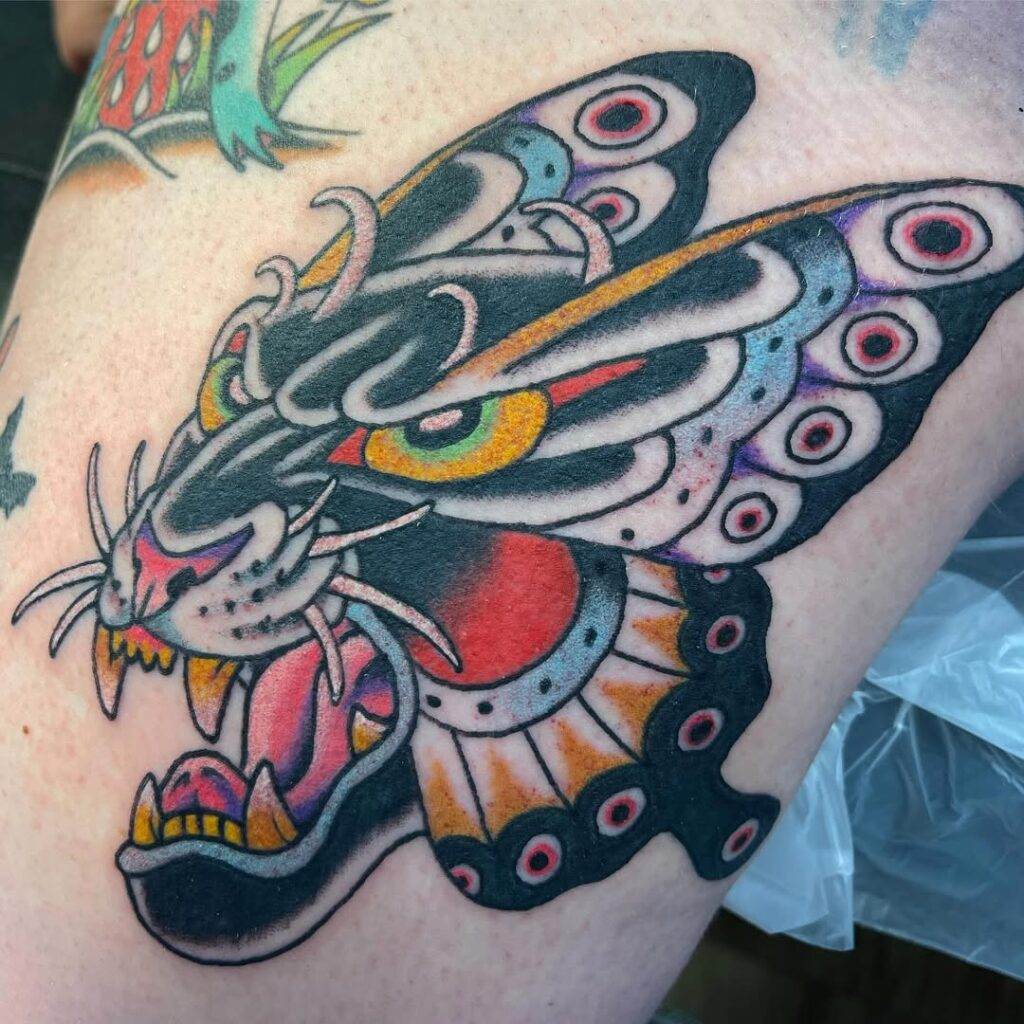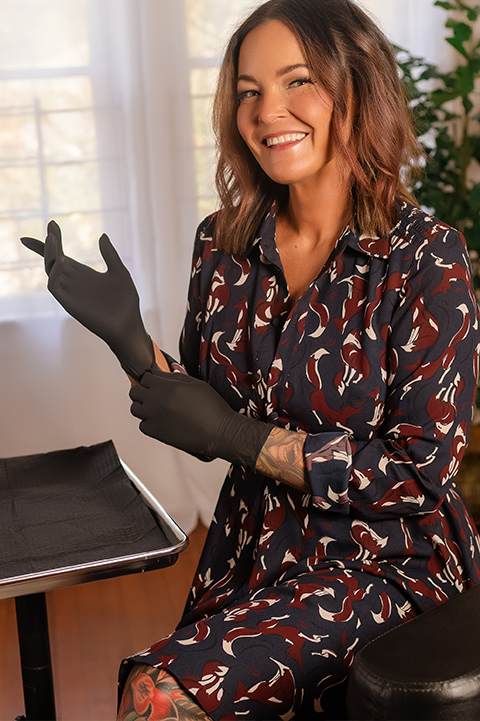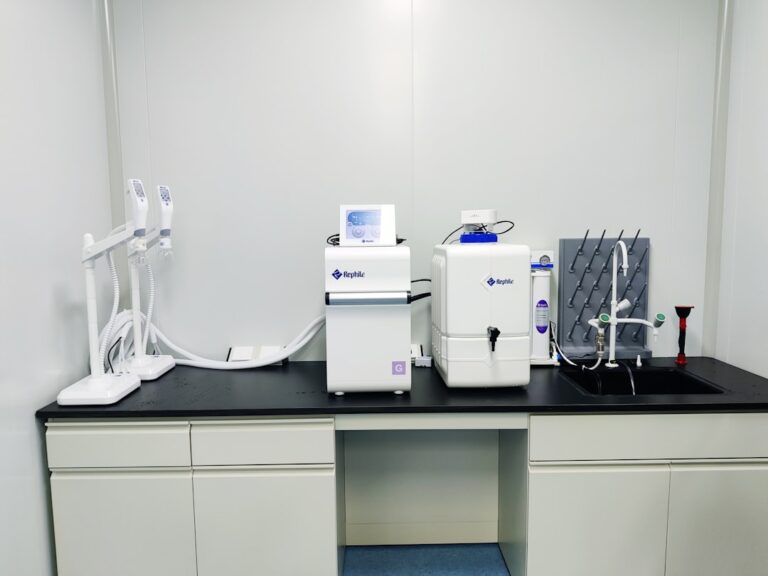The tattoo healing process is a critical phase that determines the final appearance and longevity of the artwork on the skin. When a tattoo is applied, the needle punctures the skin, creating tiny wounds that need time to heal. This process typically unfolds in several stages, beginning with the initial healing phase, which lasts about two weeks.
During this time, the body works diligently to repair the skin, and it is essential for individuals to understand what to expect. The tattoo may appear vibrant initially, but as the skin begins to heal, it can become scabbed and may even flake. This is a natural part of the healing process, and it is crucial not to pick at the scabs, as doing so can lead to uneven healing and potential scarring.
As the healing progresses, the skin will gradually return to its normal state. The second phase of healing can take up to several months, during which the deeper layers of skin continue to recover. It is important to note that while the outer layer may seem healed, the inner layers may still be vulnerable.
This understanding emphasizes the need for proper aftercare throughout the entire healing period. By being aware of these stages, individuals can better appreciate their tattoos and take proactive steps to ensure they heal beautifully.
Key Takeaways
- The tattoo healing process involves stages of peeling, itching, and scabbing, and can take 2-3 weeks to fully heal.
- Proper cleaning and moisturizing techniques include using mild soap, avoiding soaking the tattoo, and applying a thin layer of fragrance-free moisturizer.
- Avoid sun exposure and swimming for at least 2 weeks to prevent fading and infection.
- Signs of infection include excessive redness, swelling, pus, and prolonged pain, and should be addressed by a healthcare professional.
- Consider clothing and fabric that won’t rub against the tattoo, and avoid tight or restrictive clothing during the healing process.
- Lifestyle adjustments for tattoo aftercare may include avoiding strenuous activities, alcohol, and smoking to promote healing.
- Touch-up and follow-up care may be necessary to fix any areas of the tattoo that did not heal properly.
- Consultation with a professional tattoo artist and additional resources can provide personalized aftercare instructions and support.
Proper Cleaning and Moisturizing Techniques
Maintaining cleanliness is paramount in the tattoo aftercare process. After getting a tattoo, it is essential to gently cleanse the area with mild soap and lukewarm water. This should be done at least twice a day to remove any excess ink, blood, or plasma that may accumulate on the surface.
Using clean hands or a soft cloth, individuals should avoid scrubbing the tattooed area vigorously, as this can irritate the skin and disrupt the healing process. Instead, a gentle patting motion is recommended to dry the area after washing. Moisturizing is equally important in keeping the tattoo hydrated and promoting optimal healing.
After cleaning, applying a thin layer of fragrance-free moisturizer or a specialized tattoo aftercare ointment can help lock in moisture and prevent excessive dryness. It is crucial to avoid products containing alcohol or fragrances, as these can cause irritation and hinder healing. Regularly moisturizing not only aids in recovery but also enhances the vibrancy of the tattoo colors, ensuring that they remain bold and striking.
Avoiding Sun Exposure and Swimming
Sun exposure can be detrimental to a healing tattoo, making it imperative for individuals to take precautions against UV rays. Direct sunlight can cause fading and discoloration of the ink, as well as increase the risk of sunburn on sensitive, healing skin. For at least a few weeks post-tattooing, it is advisable to keep the area covered with loose clothing or a bandage when outdoors.
If exposure to sunlight is unavoidable, applying a high-SPF sunscreen once the tattoo has fully healed is essential for long-term protection. Swimming in pools, oceans, or hot tubs should also be avoided during the initial healing phase. Chlorinated water and saltwater can irritate the skin and introduce bacteria that may lead to infection.
Additionally, submerging a fresh tattoo in water can disrupt the healing process by causing excessive moisture that may lead to scabbing or fading. It is best to wait until the tattoo has completely healed before engaging in swimming activities to ensure that the artwork remains intact and vibrant.
Recognizing Signs of Infection
Being vigilant about potential signs of infection is crucial for anyone who has recently gotten a tattoo. While some redness and swelling are normal during the healing process, excessive redness that spreads beyond the tattooed area can be a cause for concern. Other symptoms of infection may include increased pain, warmth around the tattoo site, or pus-like discharge.
If any of these signs are observed, it is important to seek medical attention promptly to prevent further complications. Infections can arise from various sources, including improper aftercare or exposure to unclean environments. Therefore, maintaining good hygiene practices during the healing period is essential for minimizing risks.
If an infection does occur, treatment may involve antibiotics or other medical interventions to ensure proper healing and prevent lasting damage to the skin or tattoo.
Clothing and Fabric Considerations
The type of clothing worn during the healing process can significantly impact how well a tattoo heals. Loose-fitting garments made from breathable fabrics are ideal for allowing air circulation around the tattooed area while minimizing friction against the skin. Tight clothing can rub against a fresh tattoo, leading to irritation and potentially affecting its appearance.
It is advisable to avoid wearing materials that are rough or abrasive against the skin during this sensitive time. Additionally, individuals should be cautious about fabrics that may trap moisture or heat against the skin. Synthetic materials can create an environment conducive to bacteria growth, which increases the risk of infection.
Opting for natural fibers such as cotton can help keep the area dry and comfortable while promoting healthy healing. By being mindful of clothing choices, individuals can support their tattoos in achieving optimal recovery.
Lifestyle Adjustments for Tattoo Aftercare
Incorporating lifestyle adjustments during the tattoo healing process can greatly enhance aftercare efforts. For instance, maintaining a balanced diet rich in vitamins and minerals can support skin health and promote faster healing. Foods high in antioxidants, such as fruits and vegetables, can help combat inflammation and support overall recovery.
Staying hydrated by drinking plenty of water is also essential for keeping skin supple and aiding in the healing process. Moreover, avoiding strenuous activities that may cause excessive sweating or friction on the tattooed area is advisable during the initial healing phase.
Activities such as intense workouts or sports should be temporarily set aside until the tattoo has fully healed.
By making these lifestyle adjustments, individuals can create an environment conducive to optimal healing while ensuring their tattoos remain vibrant and well-defined.
Touch-Up and Follow-Up Care
Once a tattoo has healed, some individuals may find that certain areas require touch-ups to achieve their desired look. This is particularly common with intricate designs or lighter colors that may fade more quickly than darker shades. Scheduling a follow-up appointment with a professional artist can help address any imperfections or areas that need enhancement.
Touch-ups are typically recommended several weeks after the initial tattooing session when the skin has fully healed. In addition to touch-ups, ongoing care is essential for maintaining a tattoo’s appearance over time. Regular moisturizing and sun protection are vital components of long-term care.
Applying sunscreen before sun exposure helps prevent fading caused by UV rays, while consistent moisturizing keeps the skin healthy and vibrant. By prioritizing follow-up care and touch-ups as needed, individuals can ensure their tattoos remain striking for years to come.
Consultation and Additional Resources
Consultation with a professional tattoo artist is invaluable for anyone considering getting a tattoo or seeking advice on aftercare practices. Artists often provide personalized recommendations based on their experience and knowledge of various skin types and designs. Additionally, many artists offer resources such as pamphlets or online guides that outline proper aftercare techniques tailored specifically for their work.
Furthermore, there are numerous online forums and communities dedicated to tattoo enthusiasts where individuals can share experiences and seek advice on aftercare practices. Engaging with these resources can provide additional insights into maintaining tattoos effectively while fostering connections with others who share similar interests. By utilizing available resources and consulting with professionals, individuals can enhance their understanding of tattoo care and ensure their artwork remains beautiful for years to come.
FAQs
What is tattoo aftercare?
Tattoo aftercare refers to the process of caring for a new tattoo to promote proper healing and minimize the risk of infection or other complications.
Why is tattoo aftercare important?
Proper aftercare is crucial for the healing process of a new tattoo. It helps prevent infection, scarring, and fading of the tattoo.
What are the general aftercare guidelines for a new tattoo?
General aftercare guidelines for a new tattoo include keeping the tattoo clean, moisturized, and protected from sun exposure. It is also important to avoid picking at scabs and to follow any specific instructions provided by the tattoo artist.
How long does it take for a tattoo to heal?
The healing time for a tattoo can vary, but it typically takes about 2-3 weeks for the outer layers of skin to heal. However, it can take several months for the deeper layers of skin to fully heal.
What are some common mistakes to avoid during tattoo aftercare?
Common mistakes to avoid during tattoo aftercare include over-moisturizing the tattoo, exposing it to direct sunlight, picking at scabs, and using harsh cleaning products.
What are some recommended products for tattoo aftercare?
Recommended products for tattoo aftercare include fragrance-free and gentle cleansers, unscented moisturizers, and sunscreen with a high SPF to protect the tattoo from sun damage.
When should I seek medical attention for my tattoo?
You should seek medical attention for your tattoo if you experience signs of infection such as excessive redness, swelling, pain, or discharge, or if you have any concerns about the healing process.


